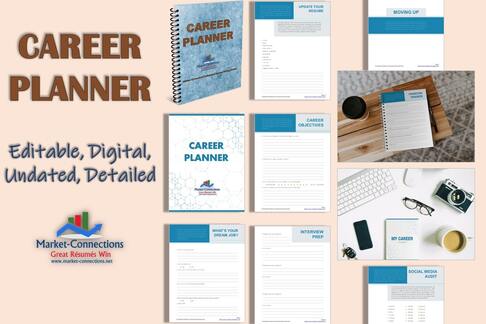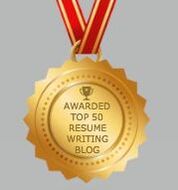Career PlannerAccording to ourworldindata.org 90 percent of our daily lives is spent doing routine tasks. But habit can be a bad thing, because “if you keep on doing what you’ve always done, you’re going to keep on getting what you’ve always got.” One of the most important things you can do is to take the time to plan your career roadmap for 2023. Whether you are thinking of a job change or career change in the new year, or simply get more out of your current job, a career plan is essential to helping you reach your goal for professional development. This exercise may take you 20 minutes, or you might devote a few hours to planning where you want to be on New Year’s Day 2023. If you want your life to be different in 2023, especially your career, take the time to work on your career roadmap. You may decide to use multiple planners including a success planner and a CAREER DEVELOPMENT PLANNER. Step 1: Take Stock The first step is to assess where you are. To figure out where you’re going, you must first look at where you’ve been. Here are some questions to help you assess where you are: ¨ What are you most proud of this past year — personally, and professionally? ¨ What went right this year? ¨ Did you receive any awards or recognition this year? ¨ Did you take on any additional responsibility this year? If so, what? ¨ How did you take initiative in your job this year? ¨ Have you learned any new skills? ¨ Did you earn any certifications or licenses? Record this information in a success journal. This can be a Microsoft Word file on your computer, a note in Evernote, a series of emails you send to yourself (be sure to use email tags so you’re able to find the emails again!), or even a physical notebook. And in the coming year, take time to record your accomplishments as you go through the year instead of waiting until the end of the year. Next, look at opportunities for improvement in your career. How does your salary stack up against your peers? Is your current position in alignment with your priorities and your core values? Where is change needed? This is when it helps to use a detailed career planner. Step 2: Articulate Your Goal Decide what you want. What is your goal for professional development? Spell it out: What does it look like; what does it feel like? You have to really want it to invest the time and energy to follow your dream. Describe your ideal job:
Think about the person that you want to be, and imagine the possibilities. If a career change is in the horizon, it helps to take a career change quiz. Then, identify 2-3 goals you want to tackle. Use the S.M.A.R.T. goal system to articulate your goals — goals should be “Specific, Measurable, Attainable, Realistic, and Time-Oriented.” For example, let’s imagine you have worked as an Accountant for the past three years, but you really want to work in marketing. Your goal might be: “By Jan. 1, 2023, I will be working as a Marketing Assistant in a Fortune 1000 company” You should also write down why you are interested in making the change. In other words, what is your motivation for taking this path? Another good question to ask yourself is, “How will I know when I’ve achieved my goal(s)?” Step 3: Make a Plan Take time to prepare a game plan and use a career planner for how you will reach your goal. But don’t use planning as an excuse to procrastinate. You want to get to Step Four as quickly as possible because actions create momentum. Take each of your goals and write down the list of steps under each of them that you will need to take to make the goal happen. The more individual steps you can map out, the easier it will be for you to reach your goals. The steps should be practical tasks that will lead you to achieve your goal for professional development. For example, with our goal of making a career change from accounting to marketing, here are some sample steps:
Give yourself milestones so you can measure your progress. How will you know when you’re on the right track? Include specific dates and numbers in your milestones. Step 4: Take Action The tasks you’ve outlined in Step Three, give you a checklist of items to use to take action. If you are working through the steps and discover you need to add additional items, update your task list. You may also discover additional projects that need to be completed to make the next step — and the overall goal — easier to accomplish. You may also find that you need to make adjustments to your timeline. For example, if you discover that a six-month program to learn about professional social media marketing would help you land your new marketing job, you might adjust your goal deadline to March 1, 2023, if the program won’t be completed until late December 2022. This would give you time to put some of the new skills into practice before you put them on your résumé. As you work your way through your task list, focus on the actions you are taking, realizing that if you are taking the right actions, these should eventually lead to the results you seek. If you’re not getting the results you want, change the plan, not the goal. Re-examine your tasks and see if there is something you are missing. It can also be helpful to get outside feedback. Enlisting the help of an accountability partner — a friend, family member, career coach, resume writer, or therapist — can provide valuable perspective on your progress. This individual can also keep you on track, making sure you are working through your task list. And if there is a specific area where you need help in order to cross the task off your list, make sure you ask for assistance. For example, writing a resume to support a career change can be difficult. Enlisting help from professional resume writing services can help you cross that task off your list. Step 5: Measure Your Progress When you’re on a journey, it can help to periodically assess where you are to make sure you’re on the right road. If you miss a step along the way — or take a “wrong career path” — you can find yourself a long way from your intended destination. So, plan periodic assessments of your progress along the way. This can be a monthly “check-up” where you review your plan and make any necessary changes or a quarterly review. Taking the time to think through — and plan out — your career roadmap is an important step in helping you create the career you want for yourself. If you don’t, you may find your career stuck or stalled. Or you may wake up five years from now and wonder, “How did I get here?” If you want to achieve more in your professional life, invest the time and effort in completing the Career Roadmap Worksheet below. SOURCE: https://www.market-connections.net/blog/career-development-planner-2023 Career Development WorksheetUse this worksheet with your career planner STEP 1: TAKE STOCK
STEP 2: ARTICULATE YOUR GOAL
STEP 3: MAKE A PLAN
STEP 4: TAKE ACTION
STEP 5: MEASURE YOUR PROGRESS
...
About the AuthorMandy Fard is a Certified Professional Resume Writer (CPRW, CMRW) and Recruiter with decades of experience in assisting job seekers, working directly with employers in multiple industries, and writing proven-effective resumes. |
Categories
All
powered by Surfing Waves
AuthorMandy Fard is a Certified Professional Resume Writer (CPRW, CMRW) and Recruiter with decades of experience in assisting job seekers, working directly with employers in multiple industries, and writing proven-effective resumes. Archives
July 2024
|
-
Greater Los Angeles
and Kern County
-
[email protected]
.




 RSS Feed
RSS Feed



